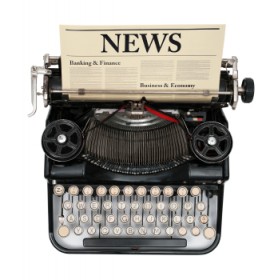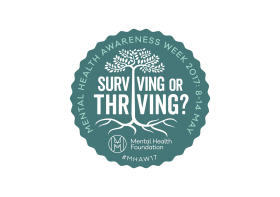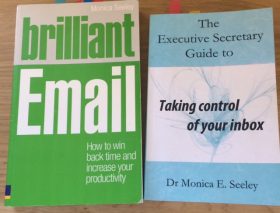Most of us suffer from chronic business email overload. The new 2018 Adobe Email Research revealed that the most irritating email phrases include:
There is little doubt that these are words which make the blood pressure rise and can destroy good relationships. The question is why does it happen?
Mesmo Consultancy’s research indicates that we receive roughly one new email every five to seven minutes of which over 50% are deemed unnecessary by the receiver. After a one hour meeting about 12 new emails are now on top of the existing backlog. If like many you spend at least two hours a day in meetings that’s 24 new emails added to the already bulging inbox. Little wonder business email overload is a cause of high blood pressure and sleepless nights. It’s not uncommon to see 500+ unread emails in the inbox.
Whose fault is it that emails are not answered and what can be done to reduce the need for these highly irritating email follow-up? Does every email sent add business value or instead flatter the sender’s personal ego? Are we so disorganised and have such a high degree of email overload that it’s impossible to see the wood from the trees?
Sender’s perspective
There are a number of reasons why your email has may have been overlooked. Many related to common sense business email etiquette. Here are the top five we see most often and tips to overcome them to save time to reduce business email overload and hence improve business performance.
1. Email is too long. You are time poor and wrote the sentences as they came into your head. You didn’t have to re-read and revise it.
Tip #1 – Use the 5S Principle of Business Email Etiquette for writing good emails – keep it structured, short, succinct, spell-checked and simple formatting. If appropriate start with a one line executive summary.
2. No clear indication of what action is expected. Did you use the correct protocol for To and Cc and make it clear in the subject-line if any action is expected and by when?
Tip #2 – Always put the recipient in the To box if you expect action. Use the subject-line to be explicit if there is a deadline for action.
3. Sent well outside normal office hours. Now it is buried in the pile of other unread emails .
Tip #3 – Draft outside office hours but only send within normal office hours.
4. Wrong medium for the message. Oh dear we are so addicted to email that we forget there are other ways to communicate and especially if the message is urgent.
Tip #4 – Pick the right medium for your message, for example if it’s urgent phone/text message/walk and talk. Look outside the inbox for discussions, for example using a collaborative platform, conference call etc.
5. Love the sound of your own voice. In the days of silent open plan offices the easiest way to chat is by email. Some people just like to look busy by emailing.
Tip #5 – Take a look at your inner self and ask why you are sending the email, what purpose is it serving? To satisfy your own ego or add real business value?
Receiver’s perspective
Why did you ignore that email? Here are the top five reasons we see when coaching people to manage their email more efficiently
1. Email overload – too much email. You need to take control of what your receive and if needs be use filters to send less important emails directly to folders.
Tip #1 – Audit your inbox and reduce the number of emails you receive. Unsubscribe, use filters and remember it’s OK to say ‘No thank you’ to colleagues when included in a circulation list.
2. No adequate way to spot quickly emails from key contacts. With an average of 60 plus new emails a day, how do you spot those from important contacts and ensure they are dealt with?
Tip #2 – Implement a way of flagging/highlighting incoming emails from key contacts.
3. Email is too long and unclear what is expected. It really is not your fault if the sender rambles on, asks too many questions in one email etc.
Tip #3 – Push back. Don’t ignore the email hoping it will go away. Instead be bold and ask what is required and if needs be prioritise.
4. Too little time to check emails properly. We are all time poor and you need to prioritise your day.
Tip #4 – Make a meeting with yourself every day dedicated to dealing properly with your inbox instead of just surfing and skimming the content.
5. Easily distracted by new emails. You have a batch from yesterday, the meeting you have just attended and ping, you are distracted every five minutes as yet another new email arrives. Little wonder you probably have 500+ emails in your inbox.
Tip #5 – Turn off all those new email alerts. If needs be set one only for emails from the boss!
Whose Really At Fault
Over arching all these is the question of priorities and an organisational culture cover my backside culture. Given these different pressure points between the sender’s and the receiver’s perspective it is little wonder that emails go unanswered. Neither party is to blame, it is a combination of mismatches in personalities, styles and priorities. Hopefully these tips will help reduce the email overload caused by those annoying and irritating email follow-ups.
Can we Help You and Your Organisation?
For more ways to improve performance through more effective email management why not come on one of Mesmo Consultancy’s Smart Email Management masterclasses or workshop
Tags: 5S Principle of Business Email Etiquette, Adobe, business email etiquette, Business email overload, Business Performance, Irritating Emails, Mesmo Consultancy, Spell Check, To versus Cc, well being
Business email management articles for February focus on having a digital detox, what happens when senior managers keep emails late at night and on Sunday evenings and reducing email overload by viewing your inbox as an information toll road.
Life is like riding a bicycle. To keep your balance you must keep moving.
Albert Einstein
This reminded me of how people often say they feel about trying to keep on top of their inbox. Add to that recent research on the toxic effect a senior manager has on his team’s well-being when he sends emails on Sunday, it is therefore little wonder that having a digital detox has been a persistent theme these last two months.
1. If you multitask during a meeting your team will do so to. The theme is not new, as the senior manager your behaviour sets the role model for your team but it seems that they are often blind to it and especially in terms of meeting and email behaviour. Whilst as a senior manager you might want to put aside time on Sunday to prepare for the week, you should not expect your team to do so. However, in reality every hour a senior manager spends on out of hours emails, translates into an extra twenty minutes of additional time for their direct reports.
2. Why quitting smart phones is the new quitting smoking. Had enough of friends and colleagues checking their smart phones whilst you are talking to them? Well you might not have to put up with such bad behaviour for ever.
3. How to Break Up with your Phone. If you need help with your digital detox a new book is at hand by Catherine Price. Click here for review. No we don’t have a copy because in our eyes it is all about that old fashioned skill of restraint and being comfortable with one’s own company. And once you have restrained, treat yourself for reaching your goal. Then stretch the goal a little more. And round the loop you go again.
That said, if you are suffering from serious social media addiction you might find a few useful tips.
Otherwise call us about our cure email addiction coaching programme.
4. Digital distractions are making us dumb and twitchy. I think we already know this but one interesting factor to emerge from a recent study is the role of pen and paper to help re-engage the brain and reduce the impact of information overload. And it can be part of your digital detox tool box.
5. View your inbox as a toll road to reduce email overload. This is a short article from Dr Seeley on how you can use the toll road approach to quickly ensure only the really important emails make it into your main inbox. There is a longer more detailed version in Taking Control of Your Inbox.
Tags: Digital detox, Multitasking, Quitting smart phones, Reducing business email overload, Senior manager's role model, well being, Work life balance
It’s that time of year, many of us are either on or planning a vacation. The perpetual question is whether or not to have an email free vacation.
We found that 80% said that dealing with the holiday email overload is one of the most stressful aspects of having a vacation. More stressful even than loosing your passport. Hence why they did not dare have an email detox. As stress and mental health rises up the corporate agenda, the reasons for disconnecting are ever more pressing to preserve our well-being.
Organisations have adopted many ways to lessen the holiday email overload effect from an ‘Out of Office’ messages asking you to re-send the email when the other person is back to adopting an email free vacation charter. But what if your company has no such policy? Here are the top ten actions you can take by yourself to have an email free vacation and reduce the holiday email overload mountain.
Pack the inbox properly

The email free vacation
Unpack the inbox on your return

Do you have any tips to share about dealing with the email free vacation challenge? There is a free copy of either Brilliant Email or Taking Control of Your Inbox for the best response. Email us your suggestions by 10 August.
Tags: Email Bankruptcy, email free vacation, email overload, holiday email overload, Mental Health and Email, Pomodoro, Saent, well being
Whosoever desires constant success must change his conduct with the times. Niccolo Machiavelli
Email overload is stressful and can also be an underlying cause of mental health issues. Hopefully you have reduced the email overload, have a clean inbox and improved your productivity and well-being.
Now the trick is to keep your inbox under control and encourage others to follow suit.
Email addiction is one of the major causes of email overload. It’s the feeling that you must constantly check your inbox no matter where you are, what you are doing or what the time of day. Moreover, we often default to email when of course there are a myriad of other ways to communicate. As many of you will know I am a great fan of pen and paper especially for saying thank you and taking ownership when being asked to do something rather than retorting with ‘send me an email’.
Day five is about taking stock, checking you are not suffering from email addiction and making plans to keep your inbox out of the email overload zone. Here is our three step plan for the last day.
Use Mesmo Consultancy’s free Email Addiction self-assessment tool. Identify your strengths and weaknesses and if necessary seek advice about how to control the urge to have another email fix.
In the coming days and weeks as you are about either to Reply/Forward or even ‘Send’ pause and ask yourself would an alternative be more efficient (eg talking, a discussion group on something like SharePoint, instant message etc)?
Look back to Day 1 and how much time you were losing. Now re-calibrate using our Cost of Email Misuse Calculator. Where do you still need to make some changes?
How will you keep your inbox slim and control the business email overload in the coming weeks? Don’t let email rule your day. Don’t feel you must check your email either first thing in the morning or every five minutes. Rather try disconnect from time to time. The most productive people are those who prioritise their time and stay focused on the task in hand.
Do you have colleagues who would benefit from managing their email more effectively as you have now done? Yes, then call us now to ask about our Brilliant Email Management master classes. Otherwise how about giving them a copy of either ‘Brilliant Email’ or ‘Taking Control of Your Inbox’?
Share your progress; Email; Facebook: Twitter (using #MentalHealthAwarenessWeek) There are two prize for the two people who have made the most outstanding progress (a copy of ‘Brilliant Email‘ and ‘Taking Control of Your Inbox”). For instance, had five days of empty inboxes, reduced the number of rounds of email ping-pong by improving their email etiquette etc.
![]() Follow me on Twitter
Follow me on Twitter
![]() Join our Facebook page.
Join our Facebook page.
Thank you for joining us for this the re-run of Clean Out Your Inbox Week to support Mental Health Awareness week We hope we have made a small contribution to helping people re-focus their work-life balance and de-stress.. Feedback on how we can improve this event for next year is always appreciated.
Tags: Business email management, Business email overload, email addiction, Mental Health Awareness Week, well being
I can feel the twinkle of his eyes in his handshake. Helen Keller
One of the quickest ways to stop email overload is to reduce the rounds of email ping-pong. Using brilliant business email etiquette to convey the right message, right first time will help. Moreover, you have less than five seconds before the recipient has formed an opinion of you for better or worse. Poor email etiquette can damage your reputation in a nanosecond.
Based on using brilliant business email etiquette, here are today’s four steps to reduce even further the level of email overload and hence improve performance, well-being and mental health.
Use our special free email Business Etiquette Check List to benchmark your email etiquette. Where and how can you improve?
Are there any email chains which could have been prevented if you had either communicated more clearly or planned ahead? What lessons can you learn from these?
Ask yourself, what image am I conveying of myself? How clear and concise is my email based in the checklist at Step 1.
Did you include an adequate greeting and closure to entice the recipient to respond properly? For more tips on how email etiquette can help you achieve an empty inbox and reduce email overload see Brilliant Email chapter 12 and ‘Taking Control of Your Inbox‘ chapter 11.
Be bold. If you receive an email you cannot understand on the first reading, ask the sender what they are trying to say. Send them a link to our Email Etiquette Checklist.
Don’t forget there are lots more tips and advice like this on ‘Brilliant Email’ and ‘Taking Control of Your Inbox’ a book written especially for PAs and EAs.And there are our Brilliant Email Masterclasses.
![]() Follow me on Twitter
Follow me on Twitter
![]() Join our Facebook page.
Join our Facebook page.
PS. Don’t forget to keep cleaning up that folder of old emails which you created on Day 1 (and indeed any other bulging folders).
Tags: business email etiquette, Business email overload, Mental Health Awareness Week, Taking Control of Your Inbox, well being